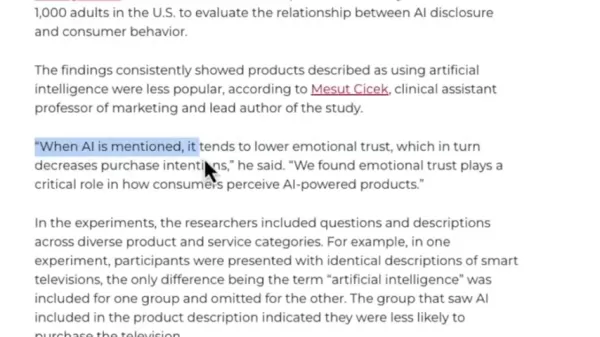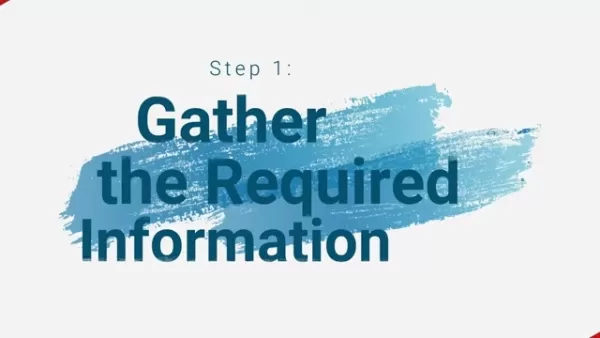AI Distrust: Reasons for User Hesitation and Strategies to Build Trust
Artificial intelligence (AI) is revolutionizing our world at a breakneck pace, yet its widespread adoption faces a major hurdle: user distrust. Even with all the incredible benefits AI offers, many folks are still wary about depending on AI-driven systems. To really integrate AI into our daily lives, it's vital to understand where this distrust comes from and how we can address it. This guide dives into the latest research on AI skepticism and offers practical tips for boosting user trust in AI technologies.
Key Points
- Users show a notable level of distrust towards AI, which affects how they engage with and adopt AI products.
- Labeling products with 'artificial intelligence' can actually lower people's desire to buy them.
- The emotional aspect of trust is crucial in how users view and accept AI-powered products.
- Overusing AI terminology or technical jargon can weaken user trust.
- Emphasizing uniquely human traits can help mitigate distrust in AI.
- Building trust hinges on being transparent, communicating clearly, and showing the value AI brings.
Understanding the Roots of AI Distrust
The Growing Trend of AI Skepticism
Recent studies show a rising wave of skepticism towards AI among users. Even though AI promises a lot, many people are hesitant to fully embrace it. This hesitation stems from various concerns, including not fully grasping how AI functions, worries about data privacy, and fears that AI might take over jobs. This skepticism has real-world impacts, slowing down the adoption of AI-powered products across industries.

A fascinating study from Washington State University found that mentioning 'artificial intelligence' in product descriptions can actually discourage people from buying. This surprising discovery points to the negative associations many consumers have with AI. In today's world, where trust is everything, labeling a product as AI-driven can backfire, resulting in lower engagement and sales.
It's worth considering how we talk about AI in product descriptions. Using more neutral language might help reduce hesitation and build more trust in our products. Another study involving over 1,000 adults, conducted by Washington State University, highlighted the role of emotional trust. Mesut Cicek, a clinical assistant professor of marketing, noted that emotional trust plays a vital role in how consumers perceive AI-powered products. When AI is mentioned, it can decrease purchase intentions if emotional trust isn't there.
The Role of Emotional Trust
Emotional trust is a big deal when it comes to users accepting AI. When people feel emotionally connected to a product or service, they're more likely to trust it. However, AI often struggles to forge the same emotional bond that human-driven alternatives can.

To build that emotional trust, it's important to focus on the human side of AI-powered systems. This means highlighting the human expertise that went into creating the AI, showing how AI positively impacts people's lives, and ensuring that the AI interacts with users in a friendly, empathetic way.
Trust is the foundation of user engagement. It's what drives people to interact with businesses, other people, and now, AI products. Building trust is key to getting customers to engage with your AI-driven solutions.
Practical Strategies for Building Trust in AI
Transparency and Clear Communication
Transparency is crucial for fostering trust in AI. Users need to know how AI systems operate, how their data is used, and what biases might exist. This means providing straightforward explanations of AI algorithms, data sources, and decision-making processes.
Clear communication is just as important. Steer clear of technical jargon or complex language that might confuse users. Instead, talk about the benefits of AI in simple, relatable terms, focusing on how AI can address real-world issues and enhance people's lives.
Demonstrating Value and Reliability
AI systems need to prove their worth and reliability to win user trust. This involves making sure AI algorithms are accurate, consistent, and free from bias. It also means giving users clear feedback on how well the AI is performing, helping them understand its effectiveness and spot any potential issues.

By consistently delivering value and showing reliability, AI systems can gradually build user trust and boost adoption rates.
Simply adding features to existing products might not be enough to build trust with customers. Providing more information can help persuade them that your product stands out and is the right choice for them.
Focus on Human Attributes
Research indicates that emphasizing uniquely human attributes can help offset distrust in AI. This means showcasing qualities like creativity, empathy, and critical thinking, which AI still struggles to replicate.

By highlighting these distinctly human traits, you can remind users that AI is a tool that enhances human capabilities, not a replacement. This can ease concerns about job displacement and foster a more positive view of AI.
Many of the things humans can do are now being replicated by AI. Emphasizing uniquely human attributes can help balance out distrust in AI. These distinctive attributes include beliefs, culture, and a sense of humor, which are uniquely human.
Key Steps in Building AI Trust
Step 1: Conduct Thorough User Research
Before rolling out any AI solution, it's essential to conduct in-depth user research. This helps you understand their needs, concerns, and expectations, pinpoint potential sources of distrust, and tailor your AI implementation accordingly. Gather insights on what consumers are looking for and their current perceptions of AI.
Step 2: Design for Transparency and Explainability
Design your AI systems with transparency and explainability at the forefront. Make it easy for users to grasp how the AI operates, what data it uses, and how it makes decisions. Provide clear explanations of AI recommendations and predictions.
Step 3: Emphasize Human Oversight and Control
Ensure that users have human oversight and control over AI systems. This means allowing them to override AI decisions, give feedback on AI performance, and report any potential biases or errors. Remind users that AI is there to augment, not replace, human capabilities.
Step 4: Communicate Clearly and Honestly
Communicate the benefits of AI in a clear and honest way, avoiding technical jargon or exaggerated claims. Focus on how AI can solve real-world problems and improve people's lives. Don't label your products with AI terms if it's not necessary.
Step 5: Continuously Monitor and Improve
Keep monitoring and improving the performance of your AI systems. Collect user feedback, track key metrics, and identify areas for improvement. Regularly update your AI algorithms to ensure accuracy, consistency, and fairness. The longer you test your AI algorithms, the more you can ensure they're consistent and fair. This builds consumer trust in your product.
Assessing the Trade-Offs: Pros and Cons of Emphasizing AI
Pros
- Potential to attract tech-savvy customers
- Can signal innovation and advanced capabilities
- May appeal to investors and stakeholders
Cons
- May deter less tech-savvy customers
- Can trigger concerns about job displacement
- May create unrealistic expectations
- Can decrease purchase intentions
Frequently Asked Questions About User Trust and AI
Why do people distrust AI?
Distrust in AI often stems from not fully understanding how it works, concerns about data privacy, fears of job displacement, and negative experiences with AI systems. This distrust is often linked to associations with job security, data, and a general distrust of big businesses and new technology.
Does using 'artificial intelligence' in product descriptions reduce purchase intentions?
Yes, recent research suggests that explicitly mentioning 'artificial intelligence' in product descriptions can reduce purchase intentions. Many see this term as one to avoid, at least for now. People often associate AI with job losses. Using more neutral terms might be a good idea until the social perception of AI changes.
What is emotional trust, and why is it important for AI acceptance?
Emotional trust refers to the feeling of connection and confidence that users have towards a product or service. It's important for AI acceptance because it can influence users' willingness to rely on AI-powered systems and believe in their capabilities.
How can I build transparency in AI systems?
You can build transparency in AI systems by providing clear explanations of how the AI works, what data it uses, and how it makes decisions. Communicate this in a way that doesn't overwhelm the consumer.
What are the benefits of human oversight in AI?
Human oversight in AI ensures that users have control over AI systems and can override AI decisions when necessary. This helps build trust, prevents errors, and ensures that AI is used responsibly and ethically.
Related Questions About Trust and AI
How do ethical considerations impact trust in AI?
Ethical considerations play a significant role in shaping user trust in AI. If AI systems are seen as biased, unfair, or harmful, users are likely to distrust them. Therefore, it's crucial to develop AI systems that align with ethical principles and values, ensuring fairness, transparency, and accountability.
What are the potential consequences of widespread distrust in AI?
Widespread distrust in AI could slow down the adoption of beneficial AI technologies, hampering innovation and progress across various sectors. It could also lead to negative social and economic consequences, such as increased inequality and job losses.
What role do data privacy and security play in building trust in AI?
Data privacy and security are critical for building trust in AI. Users need to feel confident that their data is being protected and used responsibly. This involves implementing robust data security measures, providing clear privacy policies, and obtaining informed consent before collecting or using user data.
How can AI be used to detect and mitigate bias?
AI can be used to detect and mitigate bias in data and algorithms. This involves developing AI techniques that can identify and correct biases, ensuring that AI systems are fair and equitable for all users.
What impact will regulation of AI have on consumer trust?
AI regulation can have a significant impact on consumer trust. Effective regulation can help ensure that AI systems are safe, reliable, and ethical, fostering greater confidence and acceptance among users. Be sure to consider regulations before making business decisions.
Related article
 AI-Powered Cover Letters: Expert Guide for Journal Submissions
In today's competitive academic publishing environment, crafting an effective cover letter can make the crucial difference in your manuscript's acceptance. Discover how AI-powered tools like ChatGPT can streamline this essential task, helping you cre
AI-Powered Cover Letters: Expert Guide for Journal Submissions
In today's competitive academic publishing environment, crafting an effective cover letter can make the crucial difference in your manuscript's acceptance. Discover how AI-powered tools like ChatGPT can streamline this essential task, helping you cre
 US to Sanction Foreign Officials Over Social Media Regulations
US Takes Stand Against Global Digital Content Regulations
The State Department issued a sharp diplomatic rebuke this week targeting European digital governance policies, signaling escalating tensions over control of online platforms. Secretary Marco
US to Sanction Foreign Officials Over Social Media Regulations
US Takes Stand Against Global Digital Content Regulations
The State Department issued a sharp diplomatic rebuke this week targeting European digital governance policies, signaling escalating tensions over control of online platforms. Secretary Marco
 Ultimate Guide to AI-Powered YouTube Video Summarizers
In our information-rich digital landscape, AI-powered YouTube video summarizers have become indispensable for efficient content consumption. This in-depth guide explores how to build a sophisticated summarization tool using cutting-edge NLP technolog
Comments (8)
0/200
Ultimate Guide to AI-Powered YouTube Video Summarizers
In our information-rich digital landscape, AI-powered YouTube video summarizers have become indispensable for efficient content consumption. This in-depth guide explores how to build a sophisticated summarization tool using cutting-edge NLP technolog
Comments (8)
0/200
![JonathanAllen]() JonathanAllen
JonathanAllen
 October 4, 2025 at 2:30:39 AM EDT
October 4, 2025 at 2:30:39 AM EDT
Nunca entendi tanto essa desconfiança... minha Alexa vive me dando informações erradas sobre receitas de bolo. Será que eles testam essas coisas direito? 🤦♀️ Precisava mesmo queimar três formas antes de perceber que ela confundiu colheres de sopa com xícaras!


 0
0
![GeorgeScott]() GeorgeScott
GeorgeScott
 August 8, 2025 at 2:38:17 AM EDT
August 8, 2025 at 2:38:17 AM EDT
AI distrust is real, but I get it—handing over control to a black box feels like trusting a stranger with your wallet. The article nails why people hesitate, but I wonder if transparency alone can fix this. 🤔 Maybe we need AI to explain itself like a friend, not a manual.


 0
0
![JuanLopez]() JuanLopez
JuanLopez
 July 27, 2025 at 9:20:02 PM EDT
July 27, 2025 at 9:20:02 PM EDT
I find it fascinating how AI can transform our lives, but the distrust part hits home—I'm hesitant to let algorithms make big decisions for me! 🧠 Anyone else feel like we need clearer explanations of how AI actually works to trust it more?


 0
0
![JonathanMiller]() JonathanMiller
JonathanMiller
 April 21, 2025 at 10:54:02 PM EDT
April 21, 2025 at 10:54:02 PM EDT
Hat mir gezeigt, warum ich manchmal misstrauisch gegenüber KI bin 😕. Erklärung klar und verständlich, aber mehr Beispiele wären toll! 🚀


 0
0
![CharlesYoung]() CharlesYoung
CharlesYoung
 April 21, 2025 at 12:18:08 PM EDT
April 21, 2025 at 12:18:08 PM EDT
¡Este app me hizo reflexionar sobre por qué a veces no confío en la IA! Explica muy bien los motivos, pero añadir más ejemplos prácticos sería genial. 💡


 0
0
![RonaldWilliams]() RonaldWilliams
RonaldWilliams
 April 21, 2025 at 12:01:09 PM EDT
April 21, 2025 at 12:01:09 PM EDT
AI信任问题?这个应用讲得挺清楚的,特别是那些让人不安的地方,比如数据隐私啥的,有点吓人😂。不过感觉例子还可以再多点,特别是日常生活里的。


 0
0
Artificial intelligence (AI) is revolutionizing our world at a breakneck pace, yet its widespread adoption faces a major hurdle: user distrust. Even with all the incredible benefits AI offers, many folks are still wary about depending on AI-driven systems. To really integrate AI into our daily lives, it's vital to understand where this distrust comes from and how we can address it. This guide dives into the latest research on AI skepticism and offers practical tips for boosting user trust in AI technologies.
Key Points
- Users show a notable level of distrust towards AI, which affects how they engage with and adopt AI products.
- Labeling products with 'artificial intelligence' can actually lower people's desire to buy them.
- The emotional aspect of trust is crucial in how users view and accept AI-powered products.
- Overusing AI terminology or technical jargon can weaken user trust.
- Emphasizing uniquely human traits can help mitigate distrust in AI.
- Building trust hinges on being transparent, communicating clearly, and showing the value AI brings.
Understanding the Roots of AI Distrust
The Growing Trend of AI Skepticism
Recent studies show a rising wave of skepticism towards AI among users. Even though AI promises a lot, many people are hesitant to fully embrace it. This hesitation stems from various concerns, including not fully grasping how AI functions, worries about data privacy, and fears that AI might take over jobs. This skepticism has real-world impacts, slowing down the adoption of AI-powered products across industries.

A fascinating study from Washington State University found that mentioning 'artificial intelligence' in product descriptions can actually discourage people from buying. This surprising discovery points to the negative associations many consumers have with AI. In today's world, where trust is everything, labeling a product as AI-driven can backfire, resulting in lower engagement and sales.
It's worth considering how we talk about AI in product descriptions. Using more neutral language might help reduce hesitation and build more trust in our products. Another study involving over 1,000 adults, conducted by Washington State University, highlighted the role of emotional trust. Mesut Cicek, a clinical assistant professor of marketing, noted that emotional trust plays a vital role in how consumers perceive AI-powered products. When AI is mentioned, it can decrease purchase intentions if emotional trust isn't there.
The Role of Emotional Trust
Emotional trust is a big deal when it comes to users accepting AI. When people feel emotionally connected to a product or service, they're more likely to trust it. However, AI often struggles to forge the same emotional bond that human-driven alternatives can.

To build that emotional trust, it's important to focus on the human side of AI-powered systems. This means highlighting the human expertise that went into creating the AI, showing how AI positively impacts people's lives, and ensuring that the AI interacts with users in a friendly, empathetic way.
Trust is the foundation of user engagement. It's what drives people to interact with businesses, other people, and now, AI products. Building trust is key to getting customers to engage with your AI-driven solutions.
Practical Strategies for Building Trust in AI
Transparency and Clear Communication
Transparency is crucial for fostering trust in AI. Users need to know how AI systems operate, how their data is used, and what biases might exist. This means providing straightforward explanations of AI algorithms, data sources, and decision-making processes.
Clear communication is just as important. Steer clear of technical jargon or complex language that might confuse users. Instead, talk about the benefits of AI in simple, relatable terms, focusing on how AI can address real-world issues and enhance people's lives.
Demonstrating Value and Reliability
AI systems need to prove their worth and reliability to win user trust. This involves making sure AI algorithms are accurate, consistent, and free from bias. It also means giving users clear feedback on how well the AI is performing, helping them understand its effectiveness and spot any potential issues.

By consistently delivering value and showing reliability, AI systems can gradually build user trust and boost adoption rates.
Simply adding features to existing products might not be enough to build trust with customers. Providing more information can help persuade them that your product stands out and is the right choice for them.
Focus on Human Attributes
Research indicates that emphasizing uniquely human attributes can help offset distrust in AI. This means showcasing qualities like creativity, empathy, and critical thinking, which AI still struggles to replicate.

By highlighting these distinctly human traits, you can remind users that AI is a tool that enhances human capabilities, not a replacement. This can ease concerns about job displacement and foster a more positive view of AI.
Many of the things humans can do are now being replicated by AI. Emphasizing uniquely human attributes can help balance out distrust in AI. These distinctive attributes include beliefs, culture, and a sense of humor, which are uniquely human.
Key Steps in Building AI Trust
Step 1: Conduct Thorough User Research
Before rolling out any AI solution, it's essential to conduct in-depth user research. This helps you understand their needs, concerns, and expectations, pinpoint potential sources of distrust, and tailor your AI implementation accordingly. Gather insights on what consumers are looking for and their current perceptions of AI.
Step 2: Design for Transparency and Explainability
Design your AI systems with transparency and explainability at the forefront. Make it easy for users to grasp how the AI operates, what data it uses, and how it makes decisions. Provide clear explanations of AI recommendations and predictions.
Step 3: Emphasize Human Oversight and Control
Ensure that users have human oversight and control over AI systems. This means allowing them to override AI decisions, give feedback on AI performance, and report any potential biases or errors. Remind users that AI is there to augment, not replace, human capabilities.
Step 4: Communicate Clearly and Honestly
Communicate the benefits of AI in a clear and honest way, avoiding technical jargon or exaggerated claims. Focus on how AI can solve real-world problems and improve people's lives. Don't label your products with AI terms if it's not necessary.
Step 5: Continuously Monitor and Improve
Keep monitoring and improving the performance of your AI systems. Collect user feedback, track key metrics, and identify areas for improvement. Regularly update your AI algorithms to ensure accuracy, consistency, and fairness. The longer you test your AI algorithms, the more you can ensure they're consistent and fair. This builds consumer trust in your product.
Assessing the Trade-Offs: Pros and Cons of Emphasizing AI
Pros
- Potential to attract tech-savvy customers
- Can signal innovation and advanced capabilities
- May appeal to investors and stakeholders
Cons
- May deter less tech-savvy customers
- Can trigger concerns about job displacement
- May create unrealistic expectations
- Can decrease purchase intentions
Frequently Asked Questions About User Trust and AI
Why do people distrust AI?
Distrust in AI often stems from not fully understanding how it works, concerns about data privacy, fears of job displacement, and negative experiences with AI systems. This distrust is often linked to associations with job security, data, and a general distrust of big businesses and new technology.
Does using 'artificial intelligence' in product descriptions reduce purchase intentions?
Yes, recent research suggests that explicitly mentioning 'artificial intelligence' in product descriptions can reduce purchase intentions. Many see this term as one to avoid, at least for now. People often associate AI with job losses. Using more neutral terms might be a good idea until the social perception of AI changes.
What is emotional trust, and why is it important for AI acceptance?
Emotional trust refers to the feeling of connection and confidence that users have towards a product or service. It's important for AI acceptance because it can influence users' willingness to rely on AI-powered systems and believe in their capabilities.
How can I build transparency in AI systems?
You can build transparency in AI systems by providing clear explanations of how the AI works, what data it uses, and how it makes decisions. Communicate this in a way that doesn't overwhelm the consumer.
What are the benefits of human oversight in AI?
Human oversight in AI ensures that users have control over AI systems and can override AI decisions when necessary. This helps build trust, prevents errors, and ensures that AI is used responsibly and ethically.
Related Questions About Trust and AI
How do ethical considerations impact trust in AI?
Ethical considerations play a significant role in shaping user trust in AI. If AI systems are seen as biased, unfair, or harmful, users are likely to distrust them. Therefore, it's crucial to develop AI systems that align with ethical principles and values, ensuring fairness, transparency, and accountability.
What are the potential consequences of widespread distrust in AI?
Widespread distrust in AI could slow down the adoption of beneficial AI technologies, hampering innovation and progress across various sectors. It could also lead to negative social and economic consequences, such as increased inequality and job losses.
What role do data privacy and security play in building trust in AI?
Data privacy and security are critical for building trust in AI. Users need to feel confident that their data is being protected and used responsibly. This involves implementing robust data security measures, providing clear privacy policies, and obtaining informed consent before collecting or using user data.
How can AI be used to detect and mitigate bias?
AI can be used to detect and mitigate bias in data and algorithms. This involves developing AI techniques that can identify and correct biases, ensuring that AI systems are fair and equitable for all users.
What impact will regulation of AI have on consumer trust?
AI regulation can have a significant impact on consumer trust. Effective regulation can help ensure that AI systems are safe, reliable, and ethical, fostering greater confidence and acceptance among users. Be sure to consider regulations before making business decisions.
 AI-Powered Cover Letters: Expert Guide for Journal Submissions
In today's competitive academic publishing environment, crafting an effective cover letter can make the crucial difference in your manuscript's acceptance. Discover how AI-powered tools like ChatGPT can streamline this essential task, helping you cre
AI-Powered Cover Letters: Expert Guide for Journal Submissions
In today's competitive academic publishing environment, crafting an effective cover letter can make the crucial difference in your manuscript's acceptance. Discover how AI-powered tools like ChatGPT can streamline this essential task, helping you cre
 US to Sanction Foreign Officials Over Social Media Regulations
US Takes Stand Against Global Digital Content Regulations
The State Department issued a sharp diplomatic rebuke this week targeting European digital governance policies, signaling escalating tensions over control of online platforms. Secretary Marco
US to Sanction Foreign Officials Over Social Media Regulations
US Takes Stand Against Global Digital Content Regulations
The State Department issued a sharp diplomatic rebuke this week targeting European digital governance policies, signaling escalating tensions over control of online platforms. Secretary Marco
 Ultimate Guide to AI-Powered YouTube Video Summarizers
In our information-rich digital landscape, AI-powered YouTube video summarizers have become indispensable for efficient content consumption. This in-depth guide explores how to build a sophisticated summarization tool using cutting-edge NLP technolog
Ultimate Guide to AI-Powered YouTube Video Summarizers
In our information-rich digital landscape, AI-powered YouTube video summarizers have become indispensable for efficient content consumption. This in-depth guide explores how to build a sophisticated summarization tool using cutting-edge NLP technolog
 October 4, 2025 at 2:30:39 AM EDT
October 4, 2025 at 2:30:39 AM EDT
Nunca entendi tanto essa desconfiança... minha Alexa vive me dando informações erradas sobre receitas de bolo. Será que eles testam essas coisas direito? 🤦♀️ Precisava mesmo queimar três formas antes de perceber que ela confundiu colheres de sopa com xícaras!


 0
0
 August 8, 2025 at 2:38:17 AM EDT
August 8, 2025 at 2:38:17 AM EDT
AI distrust is real, but I get it—handing over control to a black box feels like trusting a stranger with your wallet. The article nails why people hesitate, but I wonder if transparency alone can fix this. 🤔 Maybe we need AI to explain itself like a friend, not a manual.


 0
0
 July 27, 2025 at 9:20:02 PM EDT
July 27, 2025 at 9:20:02 PM EDT
I find it fascinating how AI can transform our lives, but the distrust part hits home—I'm hesitant to let algorithms make big decisions for me! 🧠 Anyone else feel like we need clearer explanations of how AI actually works to trust it more?


 0
0
 April 21, 2025 at 10:54:02 PM EDT
April 21, 2025 at 10:54:02 PM EDT
Hat mir gezeigt, warum ich manchmal misstrauisch gegenüber KI bin 😕. Erklärung klar und verständlich, aber mehr Beispiele wären toll! 🚀


 0
0
 April 21, 2025 at 12:18:08 PM EDT
April 21, 2025 at 12:18:08 PM EDT
¡Este app me hizo reflexionar sobre por qué a veces no confío en la IA! Explica muy bien los motivos, pero añadir más ejemplos prácticos sería genial. 💡


 0
0
 April 21, 2025 at 12:01:09 PM EDT
April 21, 2025 at 12:01:09 PM EDT
AI信任问题?这个应用讲得挺清楚的,特别是那些让人不安的地方,比如数据隐私啥的,有点吓人😂。不过感觉例子还可以再多点,特别是日常生活里的。


 0
0





























